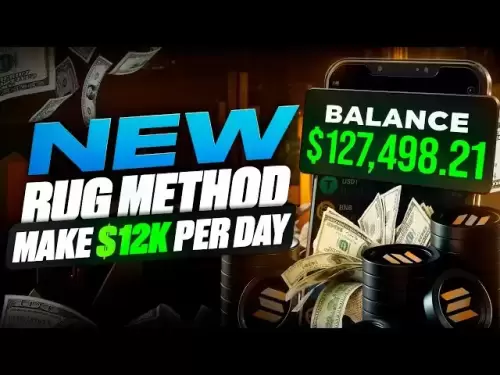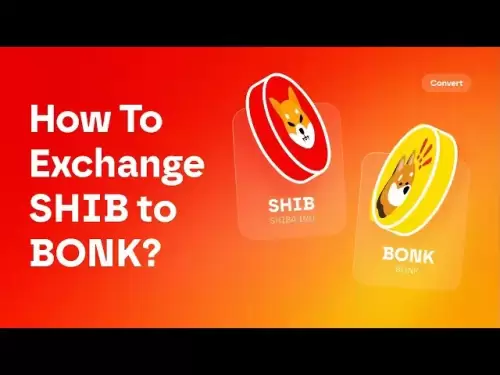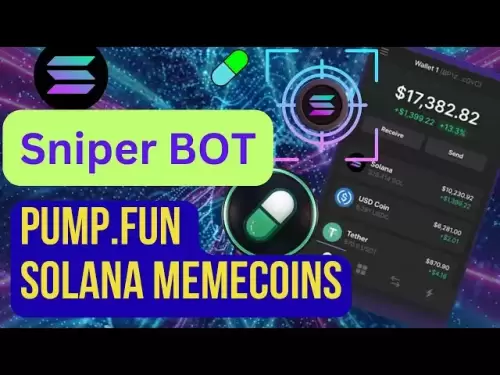-
 Bitcoin
Bitcoin $113800
0.32% -
 Ethereum
Ethereum $3477
-0.14% -
 XRP
XRP $2.873
-2.20% -
 Tether USDt
Tether USDt $0.9999
0.02% -
 BNB
BNB $749.3
-0.40% -
 Solana
Solana $161.7
-0.55% -
 USDC
USDC $0.9998
0.00% -
 TRON
TRON $0.3268
0.28% -
 Dogecoin
Dogecoin $0.1976
-0.03% -
 Cardano
Cardano $0.7250
2.27% -
 Hyperliquid
Hyperliquid $39.18
2.73% -
 Sui
Sui $3.457
1.70% -
 Stellar
Stellar $0.3832
1.16% -
 Chainlink
Chainlink $16.11
1.49% -
 Bitcoin Cash
Bitcoin Cash $539.7
1.25% -
 Hedera
Hedera $0.2410
2.21% -
 Ethena USDe
Ethena USDe $1.001
0.04% -
 Avalanche
Avalanche $21.35
0.21% -
 Toncoin
Toncoin $3.716
3.86% -
 Litecoin
Litecoin $109.3
2.88% -
 UNUS SED LEO
UNUS SED LEO $8.965
0.04% -
 Shiba Inu
Shiba Inu $0.00001214
1.02% -
 Polkadot
Polkadot $3.589
1.85% -
 Uniswap
Uniswap $9.083
1.24% -
 Monero
Monero $299.3
0.98% -
 Dai
Dai $1.000
0.02% -
 Bitget Token
Bitget Token $4.301
0.43% -
 Pepe
Pepe $0.00001045
1.32% -
 Cronos
Cronos $0.1314
0.51% -
 Aave
Aave $257.6
2.04%
How does blockchain game development implement player incentive mechanisms?
Blockchain games use token-based rewards, NFTs, and governance rights to engage players, creating a balanced economy and fostering long-term participation.
Apr 14, 2025 at 03:28 pm
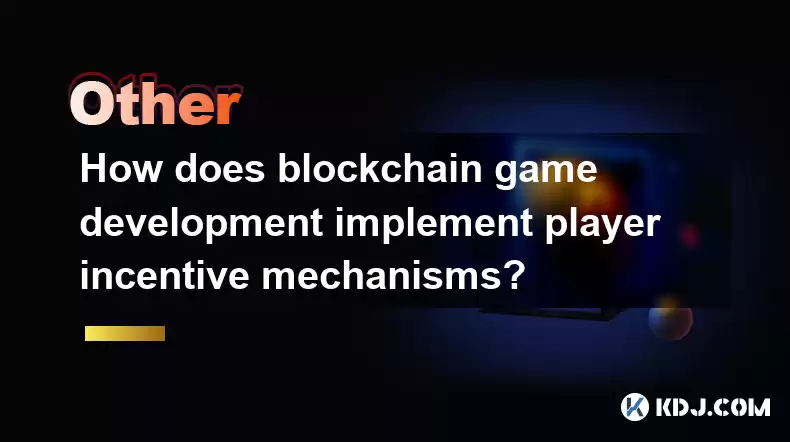
Introduction to Blockchain Game Development and Player Incentives
Blockchain game development has revolutionized the gaming industry by integrating decentralized technologies into gameplay, offering players unique incentives that traditional games cannot match. One of the core aspects of these games is the implementation of player incentive mechanisms, which are designed to enhance player engagement and retention. These mechanisms leverage the inherent features of blockchain technology, such as transparency, security, and the ability to own digital assets, to create a rewarding gaming experience.
Understanding Player Incentives in Blockchain Games
In blockchain games, player incentives are crucial for maintaining a vibrant and active community. These incentives can take various forms, including in-game rewards, token-based economies, and the ability to earn real-world value from gameplay. The primary goal is to motivate players to participate actively, contribute to the game's ecosystem, and remain loyal to the platform. By understanding the different types of incentives and how they are implemented, developers can create a more engaging and sustainable gaming environment.
Types of Incentives in Blockchain Games
Blockchain games employ several types of incentives to keep players engaged. Token-based rewards are one of the most common, where players earn tokens for completing tasks, achieving milestones, or participating in the game's economy. NFTs (Non-Fungible Tokens) also play a significant role, allowing players to own unique digital assets that can be traded or sold. Additionally, governance rights can be offered, giving players a say in the game's development and future direction. Each type of incentive serves a specific purpose and contributes to the overall player experience.
Implementing Token-Based Rewards
Token-based rewards are a cornerstone of many blockchain games. To implement these effectively, developers must design a token economy that is balanced and sustainable. This involves setting up a system where tokens can be earned through various in-game activities, such as completing quests, defeating opponents, or contributing to the game's community.
- Design the token economy: Determine the total supply of tokens, their distribution, and how they can be earned and spent within the game.
- Integrate token earning mechanisms: Implement smart contracts that automatically reward players with tokens based on their actions.
- Create a marketplace: Allow players to trade tokens and other assets, ensuring liquidity and value for the tokens.
- Monitor and adjust: Continuously analyze the token economy to ensure it remains balanced and adjust parameters as needed to prevent inflation or deflation.
Utilizing NFTs for Player Incentives
NFTs offer players the opportunity to own unique digital assets, which can be a powerful incentive. These assets can range from in-game items like weapons and skins to virtual real estate and characters. To implement NFTs effectively, developers need to create a system where these assets are valuable and can be traded or sold.
- Design unique assets: Create NFTs that are visually appealing and have utility within the game, such as enhancing gameplay or providing exclusive access.
- Implement minting and trading: Use smart contracts to mint NFTs and create a marketplace where players can buy, sell, and trade these assets.
- Ensure scarcity: Limit the supply of certain NFTs to increase their value and desirability.
- Integrate with gameplay: Make sure NFTs have a meaningful impact on the game, encouraging players to acquire and use them.
Offering Governance Rights as Incentives
Governance rights allow players to have a say in the game's development, which can be a strong incentive for engagement. By giving players the ability to vote on proposals, suggest new features, or participate in decision-making processes, developers can foster a sense of ownership and community.
- Set up a governance system: Use decentralized governance platforms or create a custom system within the game that allows players to vote on proposals.
- Define voting rights: Determine how players earn voting rights, such as through token ownership or participation in the game.
- Implement proposal submission: Allow players to submit their own proposals for new features or changes to the game.
- Execute decisions: Ensure that the results of votes are implemented transparently and efficiently, maintaining trust in the governance process.
Balancing Incentives for Long-Term Engagement
To ensure long-term engagement, balancing incentives is crucial. Developers must avoid creating a system where players can quickly earn all rewards, leading to disengagement once the incentives are exhausted. Instead, incentives should be structured to encourage continuous participation and growth within the game.
- Gradual reward distribution: Implement a system where rewards are earned over time, encouraging players to stay engaged.
- Tiered rewards: Offer different levels of rewards based on player activity and achievements, motivating players to strive for higher tiers.
- Seasonal events: Introduce seasonal events and challenges that provide new incentives and keep the game fresh and exciting.
- Community-driven incentives: Allow the community to influence the types of incentives offered, ensuring they align with player interests and preferences.
Technical Considerations for Implementing Incentives
Implementing player incentives in blockchain games requires careful technical planning. Smart contracts are essential for automating reward distribution and ensuring transparency. Developers must also consider the scalability of their blockchain platform to handle the increased transaction volume that comes with incentivized gameplay.
- Develop smart contracts: Write and deploy smart contracts that handle the distribution of tokens, NFTs, and other rewards.
- Ensure security: Conduct thorough security audits to protect the game's economy and player assets from vulnerabilities.
- Optimize for scalability: Choose a blockchain platform that can handle the game's transaction volume and implement solutions like layer-2 scaling if necessary.
- Integrate with wallets: Ensure seamless integration with cryptocurrency wallets, allowing players to easily manage their assets.
Case Studies of Successful Incentive Mechanisms
Several blockchain games have successfully implemented player incentive mechanisms, providing valuable insights for developers. Axie Infinity is a prime example, where players earn tokens and NFTs by breeding, battling, and trading digital creatures. Decentraland offers virtual land as NFTs, allowing players to build and monetize their own spaces. These case studies demonstrate how well-designed incentives can drive player engagement and create thriving game ecosystems.
FAQs
Q: How do token-based rewards affect the overall economy of a blockchain game?
A: Token-based rewards can significantly impact the game's economy by influencing player behavior and the value of in-game assets. If designed well, they can create a balanced economy where players are motivated to participate and contribute, leading to a vibrant and sustainable ecosystem. However, if not managed properly, they can lead to inflation or deflation, affecting the game's long-term viability.
Q: Can NFTs be used as incentives in games that are not fully decentralized?
A: Yes, NFTs can be used as incentives in games that are not fully decentralized. Even in partially decentralized games, NFTs can provide players with unique digital assets that enhance gameplay and offer real-world value. The key is to ensure that the NFTs are integrated in a way that adds value to the player experience.
Q: What are the risks associated with offering governance rights to players?
A: Offering governance rights to players can introduce risks such as manipulation by a small group of influential players or the potential for decisions that may not be in the best interest of the game's long-term health. Developers must implement safeguards, such as weighted voting systems and veto powers, to mitigate these risks and ensure that governance remains fair and beneficial for the entire community.
Q: How can developers ensure that the incentives they offer remain attractive to players over time?
A: To keep incentives attractive, developers should regularly update and evolve the incentive system based on player feedback and market trends. Introducing new types of rewards, adjusting the difficulty of earning them, and creating seasonal events can help maintain player interest. Additionally, fostering a strong community and involving players in the decision-making process can enhance the perceived value of incentives.
Disclaimer:info@kdj.com
The information provided is not trading advice. kdj.com does not assume any responsibility for any investments made based on the information provided in this article. Cryptocurrencies are highly volatile and it is highly recommended that you invest with caution after thorough research!
If you believe that the content used on this website infringes your copyright, please contact us immediately (info@kdj.com) and we will delete it promptly.
- Solana's Next Chapter: SOL Prediction and the SOLF Token Buzz
- 2025-08-03 18:30:16
- Token Chart Buzz: Analysts Eye Potential Price Increase with Mutuum Finance (MUTM)
- 2025-08-03 18:30:16
- Dogecoin, Utility Tokens, and Whales: A New Era for Crypto?
- 2025-08-03 19:10:16
- Small Cap Crypto Gem Alert: Ruvi AI's 100x Potential Shakes Up Solana, Ethereum, and XRP
- 2025-08-03 19:10:16
- SOLF Token vs. BONK: Predicting a $300 Solana in 2025?
- 2025-08-03 16:30:16
- Sei, Injective, and Bitcoin Dominance: Navigating the Crypto Landscape
- 2025-08-03 16:50:15
Related knowledge

What is the difference between on-chain and off-chain transactions?
Aug 02,2025 at 04:22pm
Understanding On-Chain TransactionsOn-chain transactions refer to digital asset transfers that are recorded directly on a blockchain ledger. These tra...

What is a node's role in a blockchain network?
Aug 03,2025 at 03:16pm
Understanding the Function of a Node in a Blockchain NetworkA node is a fundamental component of any blockchain network, acting as a participant that ...

What is the double-spending problem and how does blockchain prevent it?
Aug 02,2025 at 01:07pm
Understanding the Double-Spending ProblemThe double-spending problem is a fundamental challenge in digital currency systems where the same digital tok...

What is the difference between a blockchain and a database?
Aug 01,2025 at 09:36pm
Understanding the Core Structure of a BlockchainA blockchain is a decentralized digital ledger that records data in a series of immutable blocks linke...
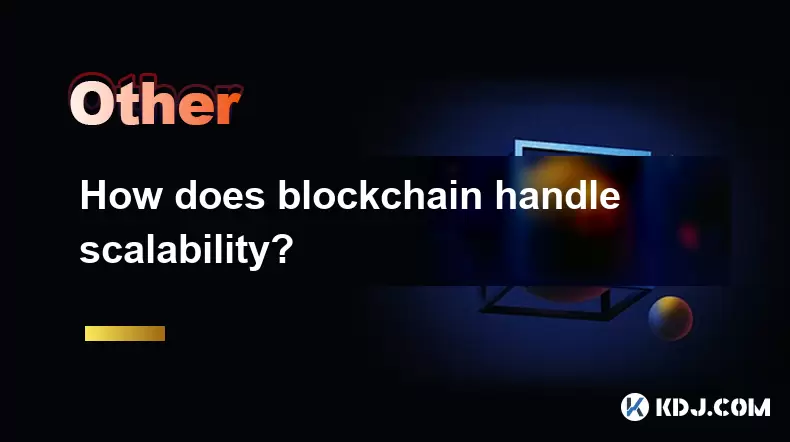
How does blockchain handle scalability?
Aug 02,2025 at 02:58pm
Understanding Blockchain Scalability ChallengesBlockchain scalability refers to a network's ability to handle an increasing volume of transactions wit...
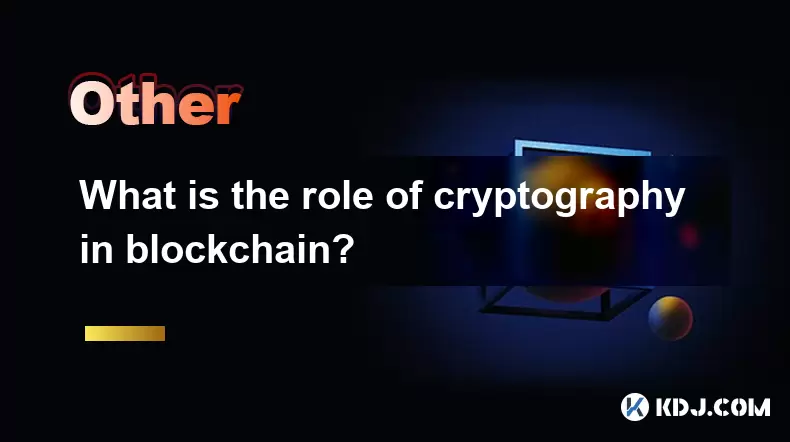
What is the role of cryptography in blockchain?
Aug 03,2025 at 03:42pm
Understanding the Foundation of Blockchain SecurityCryptography is the cornerstone of blockchain technology, providing the essential tools to ensure d...

What is the difference between on-chain and off-chain transactions?
Aug 02,2025 at 04:22pm
Understanding On-Chain TransactionsOn-chain transactions refer to digital asset transfers that are recorded directly on a blockchain ledger. These tra...

What is a node's role in a blockchain network?
Aug 03,2025 at 03:16pm
Understanding the Function of a Node in a Blockchain NetworkA node is a fundamental component of any blockchain network, acting as a participant that ...

What is the double-spending problem and how does blockchain prevent it?
Aug 02,2025 at 01:07pm
Understanding the Double-Spending ProblemThe double-spending problem is a fundamental challenge in digital currency systems where the same digital tok...

What is the difference between a blockchain and a database?
Aug 01,2025 at 09:36pm
Understanding the Core Structure of a BlockchainA blockchain is a decentralized digital ledger that records data in a series of immutable blocks linke...

How does blockchain handle scalability?
Aug 02,2025 at 02:58pm
Understanding Blockchain Scalability ChallengesBlockchain scalability refers to a network's ability to handle an increasing volume of transactions wit...

What is the role of cryptography in blockchain?
Aug 03,2025 at 03:42pm
Understanding the Foundation of Blockchain SecurityCryptography is the cornerstone of blockchain technology, providing the essential tools to ensure d...
See all articles
























